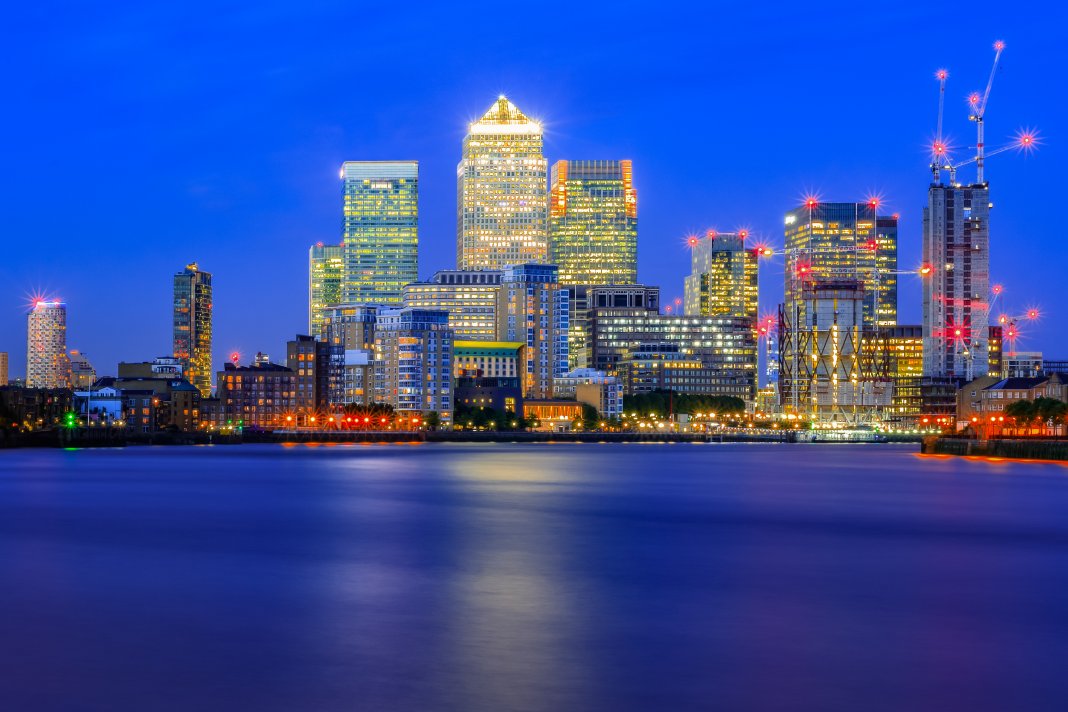One Canada Square, the iconic centerpiece of London’s Canary Wharf development, stands as a symbol of Britain’s 1980s financial revival and the transformation of London’s former docklands. Completed in 1991, the 50-story skyscraper was designed by Argentine-American architect César Pelli in collaboration with Adamson Associates and Frederick Gibberd Coombes.
The building’s design emerged from the ambitious Canary Wharf development project, spearheaded by Canadian developer Olympia & York. Standing at 235 meters (770 feet), it remained the UK’s tallest building from its completion until 2010, when it was surpassed by The Shard. The building’s distinctive form – a simple square plan topped with a pyramid – was influenced by both postmodern architectural principles and practical considerations.
The tower’s architectural style represents classic 1980s postmodernism, combining modern materials with historical references. The pyramid crown, which has become one of London’s most recognizable architectural features, was inspired by the pyramid-topped towers of Manhattan’s 1920s and 1930s Art Deco skyscrapers. This element serves both aesthetic and practical purposes, concealing the building’s mechanical equipment while creating a memorable silhouette on the London skyline.
The exterior is clad in stainless steel and glass, with durable DuPont Corian at its base. The facade employs a grid of square windows punctuated by stainless steel panels, creating a sophisticated pattern that emphasizes the building’s height while maintaining a human scale through its detail. The materials were chosen not only for their appearance but also for their durability in London’s climate.
Structurally, One Canada Square is a testament to modern engineering. Its steel-frame construction with a concrete core was designed to withstand London’s clay soil conditions. The building’s foundation extends 30 meters below ground level, and the structure is designed to sway up to 33 centimeters in high winds. The central concrete core houses the building’s 32 elevators, arranged in four banks to efficiently serve different floor zones.
The building’s ground floor lobby is particularly noteworthy for its architectural treatment. The space features a dramatic 11-meter-high ceiling and is clad in marble and stainless steel, creating a grand entrance befitting a major financial center. The lobby’s design includes public art installations, including pieces by Keith Milow and Judith Cowan, integrating cultural elements into the commercial space.

One of the building’s most innovative features was its advanced building management system, which was state-of-the-art for its time. The system controls everything from heating and cooling to security and elevator operation, making it one of the first truly “smart” buildings in the UK.
The tower’s floor plates are designed for maximum efficiency and flexibility, with each floor providing approximately 28,000 square feet of space. The core design allows for both single-tenant and multi-tenant configurations, contributing to the building’s long-term commercial viability. The windows were carefully sized and positioned to maximize natural light while maintaining energy efficiency.
One Canada Square’s impact on London’s urban development has been profound. It served as the catalyst for the transformation of the Canary Wharf area from derelict docklands to a major financial district. The building established new standards for office design in London and demonstrated that large-scale commercial development could succeed outside the traditional City of London.
The tower’s construction coincided with significant infrastructure improvements, including the extension of the Docklands Light Railway and later the Jubilee Line Extension. These transport links were crucial to the building’s success and the wider development of Canary Wharf.
Initially, the building faced skepticism due to its location and the early 1990s property crash. However, it eventually proved successful, attracting major financial institutions and establishing Canary Wharf as London’s second financial district. The building’s design has influenced subsequent developments in the area, setting a standard for quality and scale.
Today, One Canada Square remains a crucial part of London’s commercial architecture, though it is now surrounded by other tall buildings. Its distinctive profile continues to be immediately recognizable, and its design has aged well, avoiding the dated appearance that affects many buildings of its era.
The building’s environmental performance has been upgraded over the years to meet modern standards. While not originally designed with sustainability as a primary concern, various retrofits have improved its energy efficiency and environmental impact, demonstrating how 1990s commercial architecture can be adapted to meet contemporary environmental standards.
One Canada Square stands as a landmark of late 20th-century commercial architecture and urban regeneration. Its success helped establish London’s position as a global financial center and demonstrated how architectural ambition could drive urban transformation. The building remains a symbol of London’s financial power and the successful regeneration of the Docklands area.
A Little Bit of London In Your Inbox Weekly. Sign-up for our free weekly London newsletter. Sent every Friday with the latest news from London!



